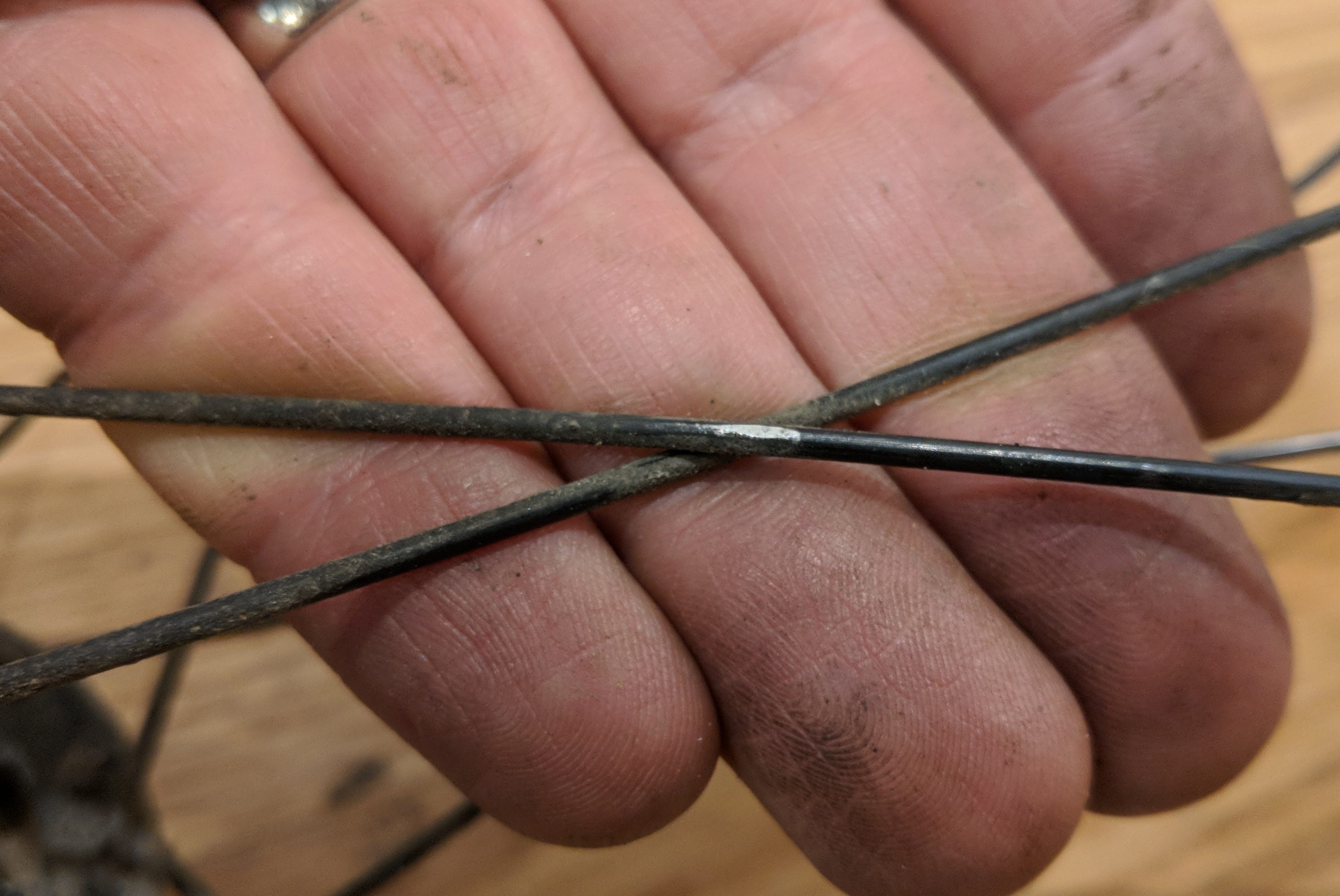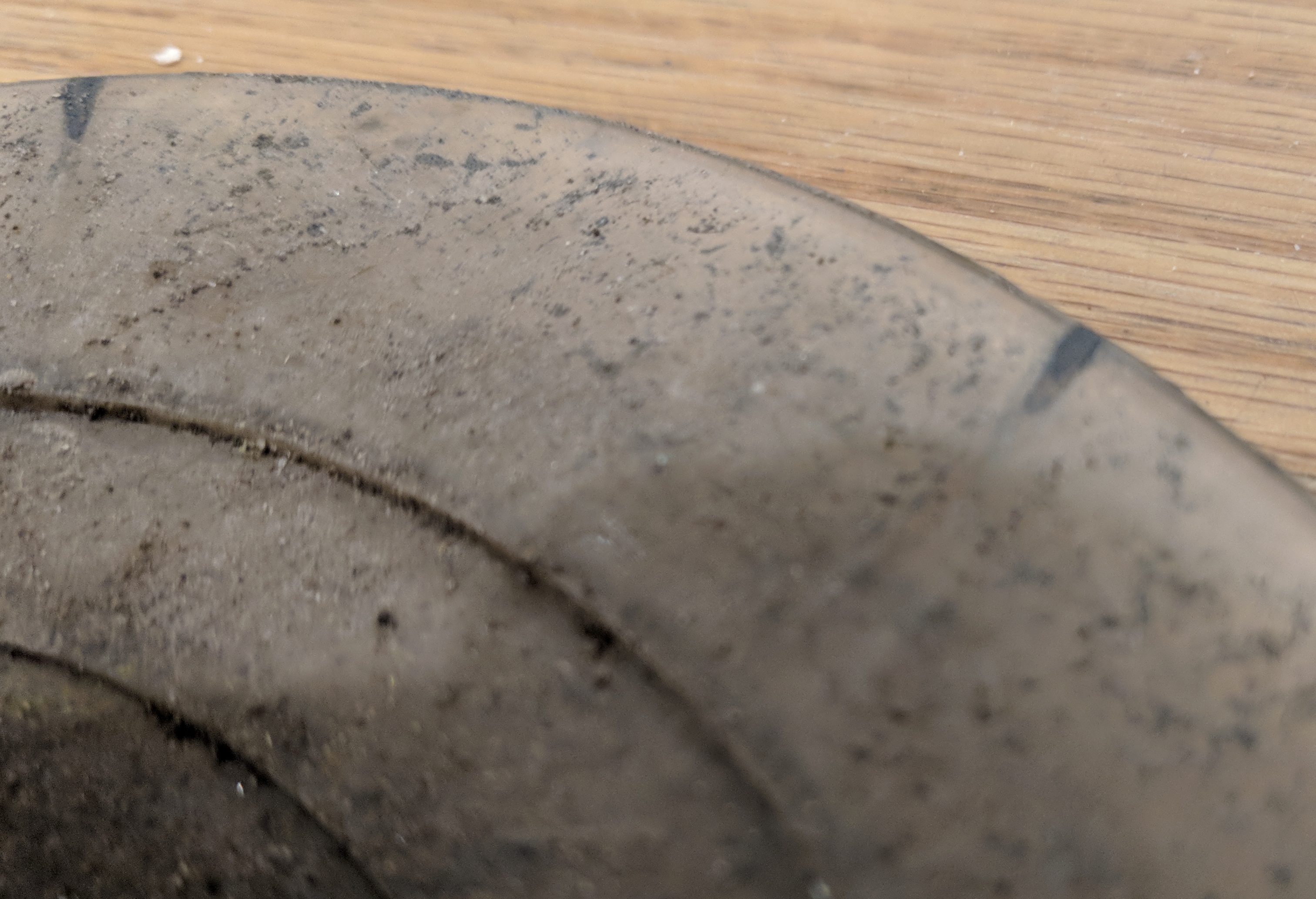There is a lot of dislike among cyclists for spoke protectors. They (the protectors) look ugly and many think that they are only necessary if you don’t know how to adjust your rear derailer properly. I know how to adjust the rear derailer, but on one of my bikes, for whatever reason, the chain jumped off the big sprocket and into the spokes. After replacing 6 spokes because of that incident, I have been firmly in the minority that favours spoke protectors. However, today I observed something that made me want to remove spoke protectors from all my bikes. Strangely, I have not encountered this argument against spoke protectors before, so I decided to type this up.
I was replacing a broken spoke on a rear wheel, and removed the cassette and the spoke protector in order to get the spoke into the hub. I noticed bare metal spots where black paint is removed from the spokes on the drive side of the wheel. The abrasions went much deeper than just removing paint. The spokes were noticeably gouged at the contact points with the spoke protector. I could feel a depression when running my finger along the spoke.

It’s a bit hard to photograph, but you should be able to see a bare metal spot on the black painted spoke in the image above. On the spoke protector itself, the points of contact with the spokes are easily visible as pits in the plastic material.

I think that the spoke protector has been trapping dirt, and the dirt between the protector and the spoke acted much like grit on sand paper. When you ride your bike, the spokes flex and deflect, rubbing themselves on the edge of the spoke protector. In time, this abrasive action wears the spokes down, creating pits, which become weak spots.
To be objective, I have not yet had a spoke failure because of this issue (whereas I did have spoke damage from chain jumping into the spokes). However, I see measurable damage to eight spokes, caused by their contact with a spoke protector. This does not sit well with me. Sign me up for the anti-spoke-protector club.